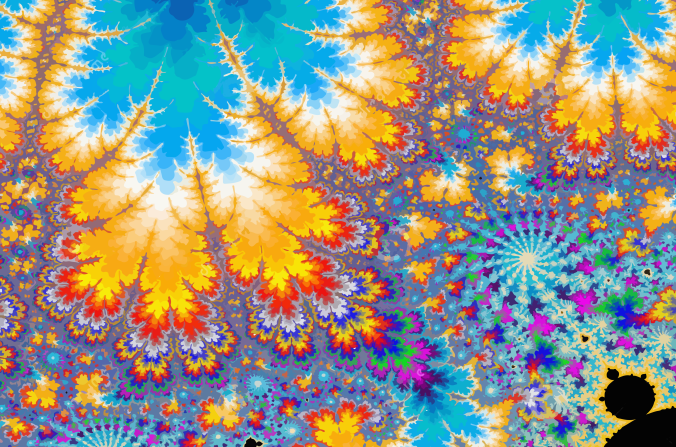LSD, or lysergic acid diethylamide, is a synthetic psychedelic compound created by Albert Hofmann in 1938, although its psychoactive properties were not discovered until Hofmann accidentally ingested some in 1943. Its structure is similar to that of the naturally occurring psychedelic compound psilocybin, and it acts on serotonin receptors (5-HT2A) in the brain.

For the decades following LSD’s discovery, an explosion of recreational interest in the drug produced hugely influential music, art and film, while scientific interest in the compound resulted in a large number of clinical trials into LSD as a potential treatment of depression, OCD, alcoholism and many more. Despite no evidence of harm or toxicity, LSD was made illegal in the US and elsewhere in the ’60s, curtailing scientific research into the drug.

Fractal geometry is a typical visual hallucination associated with LSD
An estimated 30 million people have taken LSD worldwide, despite the inherent difficulty in its synthesis. LSD is typically created as a liquid, and soaked into paper, allowing the user to tear off small pieces for ingestion. As little as 25 micrograms of LSD held in the mouth can produce cognitive effects that may last up to 12 hours. Users may experience anxiety, hallucinations, alterations in the perception of time, synaesthesia, heightened senses and a loss of sense of self or ‘ego dissociation’.
There is no evidence of toxicity or long-term harm from LSD use, but as with all psychedelic drugs, it should be treated with respect. It is considered a highly illegal drug worldwide.
Useful Links:
Blog posts about LSD on The Psychedelic Scientist
References
Liester (2014) A review of LSD in the treatment of addictions: historical perspectives and future prospects. Current Drug Abuse Reviews 7(2):1-11
Nichols (2016) Psychedelics. Pharmacol Rev 68:264-355